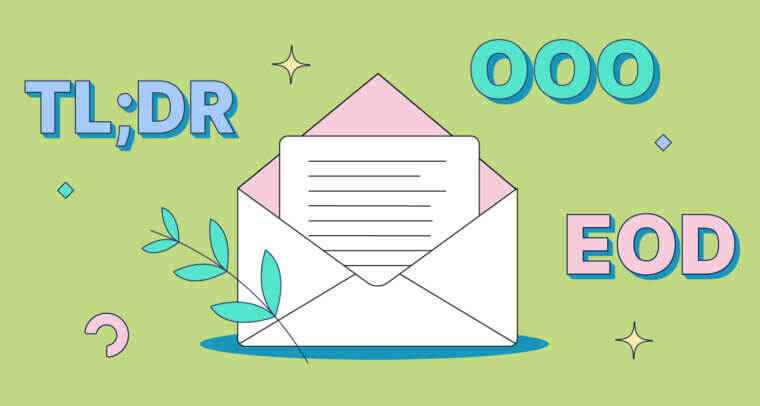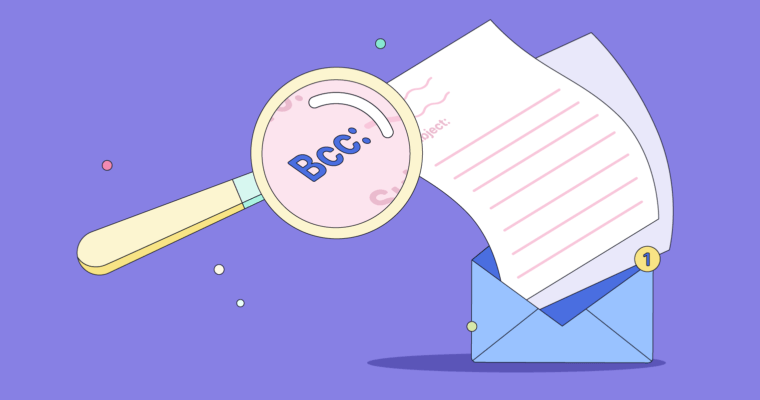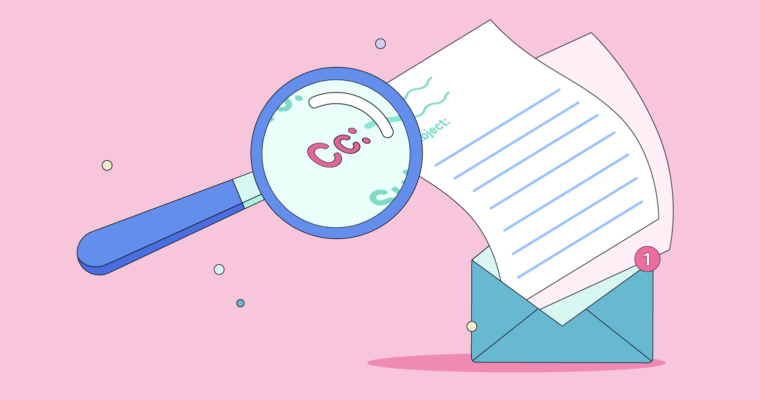
We use acronyms in emails every day, and it can be tough to keep the capital letters straight. To be clear, an acronym is pronounced as a word (like NASA) and an initialism is pronounced as letters (like FBI)—and both are forms of abbreviation. In common usage though, people refer to both things as acronyms. Here’s a list of fourteen common email acronyms and initialisms and their meanings.
1 ASAP
The letters in ASAP stand for “as soon as possible.” This acronym is useful when you want to assure others that you will complete an action in a timely manner. However, weigh the pros and cons of using it.
2 Bcc and Cc
Bcc and Cc are initialisms that you will see as options in your email program. Cc stands for “carbon copy.” You use it when you want to send a message not only to the main addressee but also to other interested parties. On certain occasions, you may prefer that everyone doesn’t see all of the recipients of a message. In that case, you would enter their email addresses in the field marked Bcc, or “blind carbon copy.”
3 CAPTCHA
You’ve likely used CAPTCHA in order send a form, or login to a website. The screen requests that you type in the wavy or distorted letters or numbers pictured in an image, to prove that you are a human, rather than a bot (who would fail the test). CAPTCHA means “Completely Automated Public Turing test to tell Computers and Humans Apart.”
4 EOD
EOD means “end of day.” You will have to find out how your employer uses this term. For some, it might mean the end of a 24-hour day (i.e., midnight), but others might use it to refer to the closing time of a particular business.
5 EOM
EOM means “end of message.” People often use this in the subject line to save readers the trouble of opening an email unnecessarily. For instance, you can leave the rest of the email blank if your subject line says, “Budget meeting 10/11/2019 at 11 am (EOM).”
6 FYI
If you want to share some helpful information, you can use FYI. It means “for your information.”
7 GIF
These moving image files are sometimes attached to emails, and they’re often funny (picture a cat pawing at a keyboard) or reinforce a feeling (palm to face). It means “Graphics Interchange Format.”
8 Ms. or Mx.
Have you seen one of these titles introducing a woman’s name? Ms. identifies a person as a woman without revealing if they are married or single (as in the case of Mrs. and Miss), while Mx. is used as a gender-neutral honorific for those who identify outside of the gender binary. Use your discernment when addressing someone in a professional email.
>>Read More: Here’s How to Know the Difference Between Miss, Mrs., and Ms., and Mx.
9 NRN
If you send an email and you don’t need a response, you can use NRN which means “no reply necessary.” If not, people may think you expect an “OK” or “Thanks” as a reply.
10 OOO
When you are out of the office, you can let coworkers and others know by adding OOO to your auto-reply signature. If they have an urgent question, this initialism will let them know not to expect an immediate reply from you.
11 OT
If this article suddenly began talking about professional attire, you might wonder how this subject relates. In an email, you can easily signal such a change in subject by introducing a new thought with the letters OT. OT stands for “off topic.”
12 PS
Perhaps the most quintessential professional abbreviation, PS is from a Latin expression, “postscriptum.” It means “written after” or “postscript.” It indicates that you added the message following it as an afterthought. Writing guides differ on its use and punctuation, but generally PS with no punctuation is a safe bet.
13 YTD
YTD means “year to date.” In a year (calendar or fiscal), you can use YTD to indicate where you are as of the current date. For example, you might present your profit margin in a quarterly email: “We’ve made $800,000 in sales YTD.”
14 TL;DR
TL;DR signifies“too long; didn’t read.” It’s often used to signpost a quick summary of a much lengthier email. For example, you’d write, “TL;DR the project timeline is getting pushed very far back.”
Acronyms are helpful abbreviations that keep emails concise. Once you become an expert at the letters and punctuation, you’ll have no trouble using them to communicate well at work. Which abbreviation do you find the most useful?![]()






